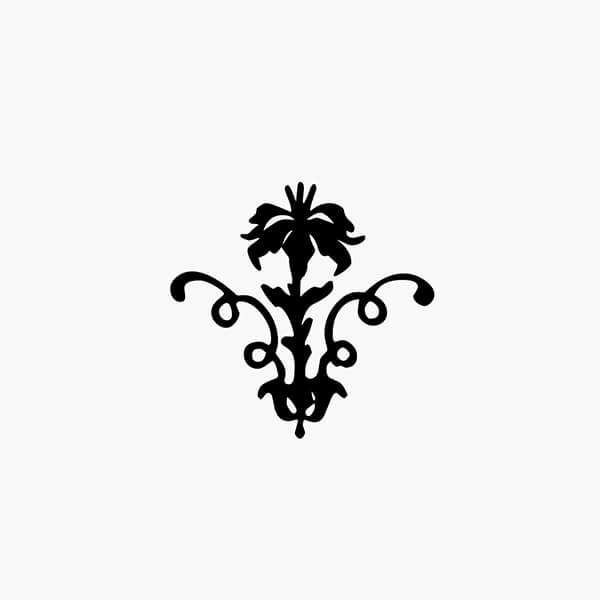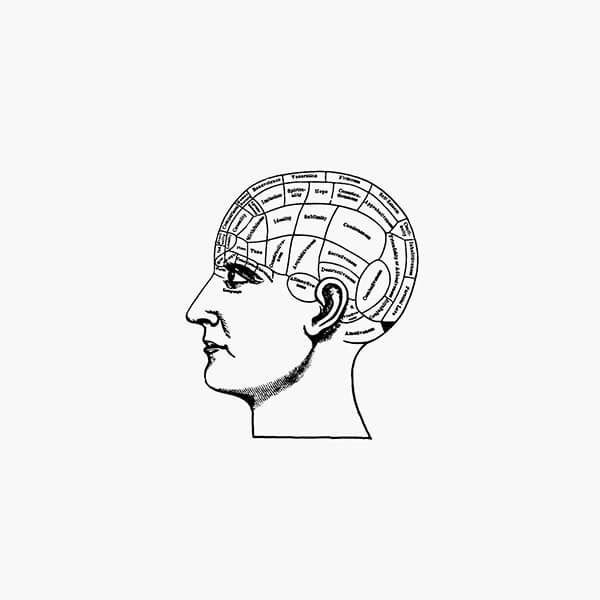



























History
Publishing as Art
In Italy in the era of Transavanguardia and the Nuovi-Nuovi, in a time of confused, languishing modernity, the expansion of Franco Maria Ricci’s publishing work into the field of visual arts constituted, as early as 1970, quite an event.
While creative minds and the critics seemed to be captivated by ever more fleeting expressive trends, Franco Maria Ricci was creating magnificent volumes, collections of art, literature and bibliophilia that unapologetically ignored the furor and frenzy of the contemporary scene.
Who was Franco Maria Ricci? He was perhaps, first and foremost, an avid collector, whose passion succeeded in bringing together the most diverse eras and locations. From Etruscan canopic jars to Elton John’s glasses, from Ara Pacis reliefs to Domenico Gnoli’s metaphysical beds, naturally passing through the myriad wonders of the Renaissance and the Baroque, of Christian Europe and the East and West Indies, Franco Maria Ricci’s repertory captured the timeless splendor of ephemeral things of beauty.
While creative minds and the critics seemed to be captivated by ever more fleeting expressive trends, Franco Maria Ricci was creating magnificent volumes, collections of art, literature and bibliophilia that unapologetically ignored the furor and frenzy of the contemporary scene.
Who was Franco Maria Ricci? He was perhaps, first and foremost, an avid collector, whose passion succeeded in bringing together the most diverse eras and locations. From Etruscan canopic jars to Elton John’s glasses, from Ara Pacis reliefs to Domenico Gnoli’s metaphysical beds, naturally passing through the myriad wonders of the Renaissance and the Baroque, of Christian Europe and the East and West Indies, Franco Maria Ricci’s repertory captured the timeless splendor of ephemeral things of beauty.
Franco Maria Ricci’s first title, which he published in 1963, was a work of writing in the literal sense of the term: Giambattista Bodoni’s Manuale Tipografico. Bodoni, a creator of refined typefaces prized for their elegance and legibility, had opened a printing house in 1790. Following in his footsteps, Ricci made his publishing debut, almost as though for amusement, by assembling “a little printing workshop in order to produce a reprint of the Manuale”.
The unexpected success of his 900 copies of the reproduction would decide the future of his endeavors. A taste for the beauty of the typeface, for the proportions and harmony of the layout, and for all the elements that “dress” something to be read – in short, everything that fostered young Ricci’s love of books – were at the origin of his collections.
The unexpected success of his 900 copies of the reproduction would decide the future of his endeavors. A taste for the beauty of the typeface, for the proportions and harmony of the layout, and for all the elements that “dress” something to be read – in short, everything that fostered young Ricci’s love of books – were at the origin of his collections.
Bibliophilia
Donner à voir
From the very start of his activities as a publisher, one of Franco Maria Ricci’s obsessions was donner à voir, that is, making the works he was presenting stand out and catch the eye, not only through the use of black but with all the tools at his disposal.
What first made this idea reality was his “Signs of Man” series, whose first title, Il Disertore, came out in 1967. Appearing between the black-and-gold covers and page layouts with pure, crisp neoclassical style was a prominent ensemble of authors, including Italo Calvino, Umberto Eco and Cesare Zavattini, whose texts accompanied the rich iconography that made these volumes so distinctive.
Following closely behind was the “Quadreria” series. Its large, light-blue pages featured works of art, precious miniatures, secret palaces and mirabilia of all kinds.
This odd, omnivorous cabinet of curiosities further expanded with the series “Luxe, calme et volupté”, dedicated to the world of fashion, and “Iconography”, whose volumes welcomed little known works and unexpected treasures from the past.
What first made this idea reality was his “Signs of Man” series, whose first title, Il Disertore, came out in 1967. Appearing between the black-and-gold covers and page layouts with pure, crisp neoclassical style was a prominent ensemble of authors, including Italo Calvino, Umberto Eco and Cesare Zavattini, whose texts accompanied the rich iconography that made these volumes so distinctive.
Following closely behind was the “Quadreria” series. Its large, light-blue pages featured works of art, precious miniatures, secret palaces and mirabilia of all kinds.
This odd, omnivorous cabinet of curiosities further expanded with the series “Luxe, calme et volupté”, dedicated to the world of fashion, and “Iconography”, whose volumes welcomed little known works and unexpected treasures from the past.
While visiting Borges in Argentina, Ricci instilled in him the idea of compiling his dream library, a collection of texts he deemed to be true jewels of fantasy literature. Inspired by the title of one of the finest Borgesian tales, the series was named “Library of Babel”. Published between 1975 and 1985, this wasn’t a literature collection but a collection of readings reproposed with simplicity by a great reader to the readers of later generations. In it Borges presented his personal selection, consisting of authors he’d read and loved in his youth.
“Blue Library”, a repechage series that had come out shortly before that, also cultivated an enjoyment of texts, bringing selected works back from long periods of oblivion, as did “Morgana”, a series from the same period that satisfied a whimsical curiosity in the extravagant and the unusual.
“Blue Library”, a repechage series that had come out shortly before that, also cultivated an enjoyment of texts, bringing selected works back from long periods of oblivion, as did “Morgana”, a series from the same period that satisfied a whimsical curiosity in the extravagant and the unusual.
The Pleasure of Texts
Ephémère
“The most beautiful magazine in the world”.
This was the slogan with which the magazine FMR was launched in 1982. It took its name from Franco Maria Ricci’s initials read in French, and introduced from four to six topics per issue.
Luxurious yet in its own way austere, worldly yet somewhat hermitic, far from media hype and explicitly destined for an elite readership with refined taste, FMR met with great success and was published for twenty years, in 163 issues and four languages. Today, after a period of discontinuation, it is returning to life within the walls of the Labirinto della Masone.
This was the slogan with which the magazine FMR was launched in 1982. It took its name from Franco Maria Ricci’s initials read in French, and introduced from four to six topics per issue.
Luxurious yet in its own way austere, worldly yet somewhat hermitic, far from media hype and explicitly destined for an elite readership with refined taste, FMR met with great success and was published for twenty years, in 163 issues and four languages. Today, after a period of discontinuation, it is returning to life within the walls of the Labirinto della Masone.
Vivid depictions and detailed close-ups invite the beholder on a journey. In a hyperbolic and literal manner, Franco Maria Ricci reinvented what we call a guide. Extreme versions of travels with erudite, visual, narrative accompaniment, this series dedicated to the Grand Tour takes us from Capri to Cento, from Fermo to Fontanellato, while with the “Impossible Guides” we explore remote, far-flung locations of which the imagination and curiosity, the desire for conquest and adventure have inspired an abundance of images, accounts and maps. Other historic series populate this theme: “Ancient States”; “Seignories and Principalities”; “Encyclopedias of Italian Cities”; “Parma”.
Not one Italy, but multiple Italies.
Not one Italy, but multiple Italies.
Grand Tour and Sublime Guides
The Labyrinth
With its bamboo plants, today the Labyrinth welcomes visitors from all over the world to the Parma countryside and contains within it the museum with the Ricci collection and the publishing house’s offices.
It is indeed among the works of art the founder collected over the course of his lifetime that the new Franco Maria Ricci books come to life, these designed with the same taste and skill as always and destined to offer the suspended time needed to once again enjoy the purest intellectual and aesthetic pleasures.
The most recent titles are gathered in a number of essential collections: impeccably crafted books on Italy’s most beautiful cities of art; detailed catalogues of the temporary exhibitions held in the Labyrinth; precious rediscoveries of works of art and craftsmanship; literary works selected with refinement and confidence; easy itineraries to discover the lands of Parma; fascinating monographs.
It is indeed among the works of art the founder collected over the course of his lifetime that the new Franco Maria Ricci books come to life, these designed with the same taste and skill as always and destined to offer the suspended time needed to once again enjoy the purest intellectual and aesthetic pleasures.
The most recent titles are gathered in a number of essential collections: impeccably crafted books on Italy’s most beautiful cities of art; detailed catalogues of the temporary exhibitions held in the Labyrinth; precious rediscoveries of works of art and craftsmanship; literary works selected with refinement and confidence; easy itineraries to discover the lands of Parma; fascinating monographs.